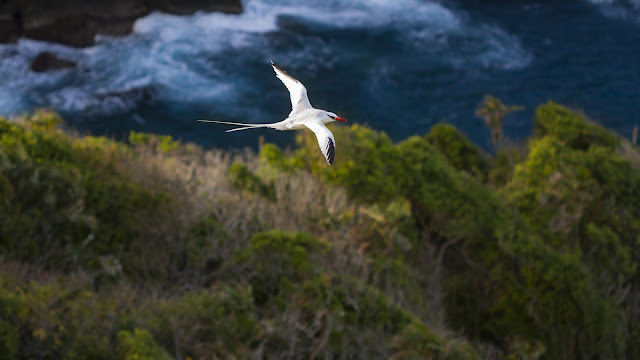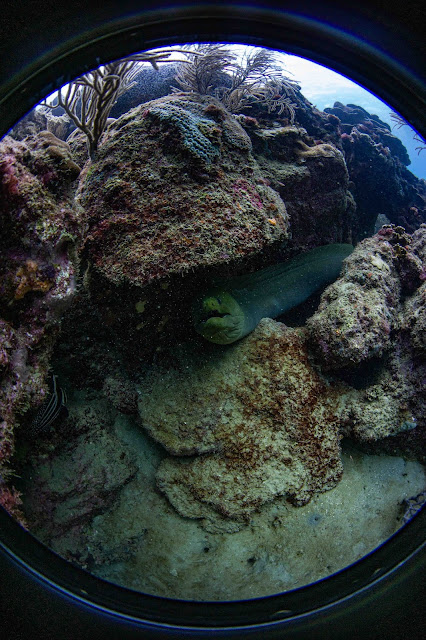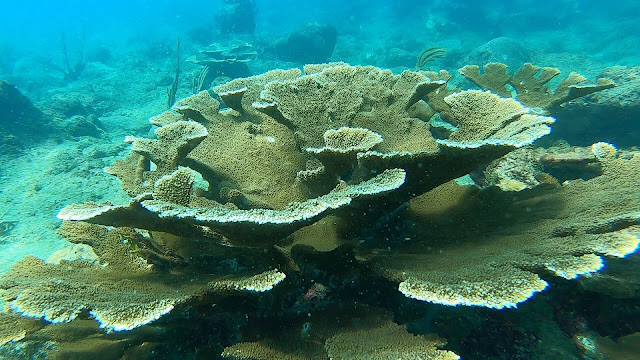Mussels, Microplastics and Corals
Dr. Anjani Ganase considers the latest ocean research. Microplastics are everywhere. Some mussels are adapting. Corals continue to lose as the climate changes.
Our ocean is a vast and wild place with much more to be discovered. Ocean research may seem irrelevant to our day to day lives but the knowledge we obtain from studying the deepest darkest places and the teeny tiniest organisms have significant implications to our climate, health and wellbeing. Let’s delve into some of the latest research. Targeted research may focus on a handful of species within a location but these studies are the building blocks for regional and global understanding to guide policy and management.
World War II mussels
Mussel beds off Dillon Beach in Northern California continue to thrive even under climate change. This is what a group of University of California students was able to discover when they came across an unpublished report of a survey of the mussel beds from 1941, during World War II around the time of Pearl Harbour. The students replicated the survey, using old maps, the survey data and old photographs from the report. To their surprise, the mussel beds continue to thrive today, in contrast to many other mussel bed sites along the coast of California.
%20Eric%20Sanford.jpg)
Dr. Emily Longman (left) and lab
technician Sarah Merolla (right) preparing to sample the mussel bed community
at Dillon Beach, California. Credit: Eric Sanford, UC Davis %20Jacqueline%20Sones,%20UC%20Davis.jpg)
A mussel bed in the Bodega Bay
region of northern California creates three-dimensional habitat for crabs,
snails, worms, sea cucumbers, and many other marine species. (Jacqueline Sones
/ UC Davis)
There were, however some critical changes to the community composition. While there was considerable overlap in the number and types of species present between 1941 and 2019 when the new survey was conducted, there was a shift to a greater proportion of mussel species that typically dwell in warmer waters of southern California from cold-water species more common in 1941. Another major change is the decline in the average size of the mussels, another likely adaptation to the warmer water. There was additional delight when the students were able to meet a surviving co-author of the original report, 101-year-old Milton Hildebrand who lived nearby.
Historical data serve as important baselines for ecosystem health and can help define targets in restoration activities. Such studies also help correct shifting baselines, how the ecosystem is perceived over time and the expectation of how the ecosystem should be. Similar datasets exist for Tobago’s coral reefs from the 1980s and serve as a reminder that coral reefs today are nothing like coral reefs of the 1980s and 70s.
Microplastics in seafood
The age of humans will be recorded not only by the high extinction rates in nature, habitat loss, and climate change but by the layers of plastic that cover our lands and seas. Scientists in Oregon set about testing the prevalence of microplastics (plastic fragments, fibres and particles less than 5 mm in diameter) in commercial fish species after previous studies revealed a high accumulation of microplastics in commercial species of mussels and clams. Samples of commercial fish species including pink shrimp, Pacific herring, Chinook salmon and rockfish, showed that microplastic contamination is widespread, occurring in nearly all tested samples caught for retail sales and for research. Not surprisingly, the prevalence of microplastics was higher in smaller species of fish that fed on zooplankton and filter feeders. The pink shrimp that feed close to the water’s surface had the highest concentrations of all. Concentrations were the lowest in the oceanic adult species.
The most common type of microplastic were fibres from synthetic cloth. Micro fibres occurred in over 80 % of the fish samples. The fibres could be as big as 3.6 mm and occurred in the gut of the fish as well as the edible muscle. The next step would be to find out how the plastics go from the gut or the gills to the muscles. While it was expected that fish caught for retail may have additional microplastics introduced through processing and packaging, this was not consistent. Researchers found that the microplastics concentrations were lower in the pink shrimp being sold because of washing and cleaning, while the microplastics increased in other fish species that were packaged in plastic. Nearly all the fish samples - packaged or not - had microplastics in them.
The outcome of the research gives insight into the need for controlling microplastic pollution in our freshwater and seawater; perhaps through some mechanism for household waste water. While the concentrations found in the fish we eat is not higher than that found in drinking water and other foods, we need to understand the impacts of microplastics exposure to our health and the ecosystems they pass through. General recommendations include buying fish whole and unpackaged where possible, and sourcing fish responsibly from the ocean. And of course, reducing the use of plastic packaging.

Plastic pollution, Indonesia.
Credit: Vincent Kneefel / Ocean Image Bank
Corals like to live close
On a recent trip to the island of San Andres, Colombia, I previewed the future of Tobago’s reefs. San Andres’s reefs, like most reefs in the Caribbean, have been plagued by stony coral tissue loss disease wiping out up to 30 species of the most common reef boulder and brain corals. The reefs are a graveyard of dead coral structure overgrown in algae. While not all the corals were gone, colonies were found dispersed far and wide. This is bad news for corals, as Professor Peter Mumby from the University of Queensland showed in a simple experiment conducted on a coral reef in Palau, Micronesia.
Corals reproduce sexually once a year. During this critical time, over a few nights following the full moon, corals of the same species synchronously release sperm and eggs into the water column for passive mixing and fertilisation. The researchers set up containers over colonies of a species of table corals occurring at different distances away from each other. The containers trapped the eggs, while permitting the spread of sperm to fertilise downstream colonies with entrapped eggs. What they found was that the sperm did not travel through the water as effectively as one would expect. Fertilisation rates dropped from 30 % to 10 % for colonies at 10 m apart and there was virtually no fertilisation for colonies 20 m apart.
While this simple study does not consider all the dynamics of the spawning event, it provides some insight into the reproductive rates as coral populations thin out across coral reefs of the Caribbean. It can guide strategies in coral restoration, recognising the need for clustering outplant corals of the same species with different genetic traits for long-term viability. As corals become depleted on our reefs, there will be serious consequences to our coastal protection, biodiversity and food security, and livelihoods, especially in the Caribbean where we are heavily reliant on coral reef resources for food, income and recreation.
Studies like these show us dimensions of our ocean world which unfortunately we are negatively impacting even as we continue our explorations. What all ocean surveys do show us is the incredible immensity and connectedness of the ocean with the whole earth. And if you think about it, you can’t help but marvel at the beauty and symmetry of how we are all connected. And perhaps, we can learn to live like the birds and fish.
 |
| Elkhorn Coral in the Buccoo Reef Marine Park photo by Anjani Ganase |
References
Longman, E.K., Merolla, S., Talke, S.A. et al. Evaluating historical changes in a mussel bed community in northern California. Sci Rep 15, 1930 (2025). https://doi.org/10.1038/s41598-025-86105-9
Mumby, P.J., G. Sartori, E. Buccheri, C. Alessi, H. Allan, C. Doropoulos, G. Rengiil, G. Ricardo, Allee effects limit coral fertilization success, Proc. Natl. Acad. Sci. U.S.A. 121 (52) e2418314121, https://doi.org/10.1073/pnas.2418314121 (2024).
Traylor SD, Granek EF, Duncan M and Brander SM (2024) From the ocean to our kitchen table: anthropogenic particles in the edible tissue of U.S. West Coast seafood species. Front. Toxicol. 6:1469995. doi: 10.3389/ftox.2024.1469995



